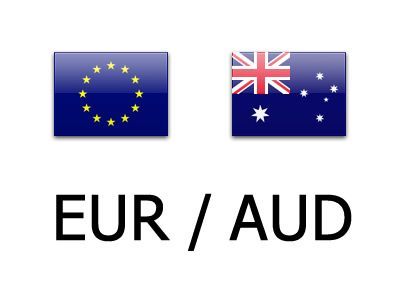-
The USD/JPY pair trades 0.23% lower to near 155.80 during the European trading session on Wednesday. The pair extends its losing streak for the third trading day on Wednesday, which started after failing to gain further above an almost 11-month high near 158.00.
-
Motive, an Alphabet-backed fleet management software company, files for IPO
Motive says its products, including a dashboard camera for tracking truckers, have saved over 1,000 lives. -
Here’s how AI could influence the Fed’s economic outlook
Artificial intelligence could produce faster gains in worker productivity, altering the U.S. labor market and the Federal Reserve’s economic outlook. -
Who’s got the power?
I spoke about this issue back in November already here: Here’s another reason why the AI trade might need a bit of rethinking
So, is 2026 going to be the year where that narrative takes over markets and we all have to redefine what it means to be in the AI trade?
Perhaps so. In reading the backdrop to the linked article above, it is clear that the real bottleneck and limitation to the development of AI isn’t coding or silicon. It’s all about electrical power and the physical capacity to access it.
In repeating the quote from Microsoft CEO, Satya Nadella:
“The biggest issue we’re now having is not a compute glut. It’s power. You may actually have a bunch of chips sitting in inventory that you can’t plug in – in fact, that is my problem today. It’s not a supply issue of chips. It is actually the fact that I don’t have warm shells to plug into.”
As everyone is chasing data centers now, the lead time and wait time to get all of that done has increased dramatically. Some of the wait time has even stretched out to five to seven years. And let’s be real, the tech companies involved don’t have that kind of time to wait and find out.
As such, some of them are pretty much forced to become their own utility providers. That is not to mention the likes of Nvidia also facing risks of supplying warehouse after warehouse full of chips that cannot be turned on because of capacity issues.
If the first half of the AI rally since 2023 was all about chips and faster, more intelligent programming, 2026 might be the year it all gets redefined to focus on the more bland stuff that is used to make and power these machines. It might just be the year of electrical transformers and the power grid.
And in focusing on that, firms like Vertiv, Schneider, Eaton, and perhaps even Siemens might steal more headlines in due time. If anything, keep an eye out on Schneider and Eaton as they have an edge in manufacturing their own circuit breakers.
As for Vertiv, the firm saw its share price hit a low of $53.60 earlier in the year but has risen by over 200% now to $166.25. Talk about a surge.
And amid all these names, let’s not forget to point to the potential surge in copper prices that could take place if this narrative takes hold. In a world that’s also involving electric vehicles, the AI industry now has to compete as well for the same raw materials in keeping up with the lightning speed progress.
This article was written by Justin Low at investinglive.com.
-
USD/CNH falls near 7 handle on Dollar weakness not Yuan strength, break seen as fragile
Offshore Chinese Yuan jumped sharply against Dollar in thin pre-holiday trading this week, driving USD/CNH to its lowest level in more than a year. But broader FX behavior points to Dollar weakness as the primary driver. Cross-rate performance supports that view. EUR/CNH has shown mostly sideways movement, suggesting Yuan strength is not uniform across major […]
The post USD/CNH falls near 7 handle on Dollar weakness not Yuan strength, break seen as fragile appeared first on ActionForex.
-
How to Spot Unfair Prop Firm Practices Before You Sign Up
Prop Trading Challenges for Newbies: How to Spot Unfair Rules and Platform Risk Before You Pay
If you are taking prop trading challenges, you are not only trading the market. You are also trading the prop firm’s rules, technology, and support quality.
Two fresh examples show why this matters:
-
A major futures prop firm faced trader backlash after repeated platform outages and trading anomalies that reportedly left some traders unable to open or close positions. The CEO publicly acknowledged the issue and referenced a January deadline to make things right.
-
Another futures prop firm faced a wave of complaints after a reported retroactive rule change that affected things like trade holding time and profit split, with traders claiming trades that were valid under the old rules got penalized under the new ones. This is like the court telliing you, you are now charged for doing something legal yesterday, after changing the rule today. Talk about absurd, right?
If you want the original reporting, here are the two Finance Magnates articles:
-
Topstep Faces Prop Traders’ Wrath due to Repeated Outages, CEO Sets January Deadline for a Fix
-
Prop Firm FundingTicks Faces Massive Backlash after “Retroactive Rule Change”
Below is a newbie-friendly guide to protect yourself from the 2 biggest non-market risks in prop trading: platform failures and rule surprises.
First, a quick glossary (so the rest makes sense)
-
Challenge / evaluation: The paid phase where you must hit profit targets while obeying risk rules.
-
Funded account: The phase after passing the evaluation (some firms call it funded, some call it “performance” or “pro”).
-
Profit split: How much of your profits you keep (example: 80% to trader, 20% to firm).
-
Drawdown: The max loss allowed. This is usually what fails accounts, not the profit target.
-
Scalping: Very short-term trading aiming for small moves, often held seconds to minutes.
-
Minimum hold time: A rule that forces you to keep trades open at least X time (example: one minute). This directly impacts scalpers.
The 2 hidden risks that can blow a challenge (even if your strategy is good)
Risk 1: Platform outages and execution problems
If a platform freezes, rejects orders, or disconnects at the wrong time, it can do real damage:
-
you cannot enter
-
you cannot exit
-
you cannot manage risk
-
your account can hit drawdown even if your trade idea was fine
Finance Magnates reported that traders complained about being unable to open or close positions during outages on Topstep’s only platform, TopstepX, and some traders claimed accounts were blown due to those issues.
Important detail for beginners: you can have the best setup in the world, but if you cannot execute, your edge does not matter.
What to look for before buying a challenge:
-
Does the firm rely on a single platform only?
-
Do they have a public track record of incidents and how they handle them?
-
When incidents happen, do they acknowledge quickly and clearly?
-
Do they have a consistent policy for disputes tied to outages?
In the Topstep story, Finance Magnates noted that Trustpilot scores fell and that the company responded to only a small portion of negative reviews, which matters because it is one proxy for how seriously a firm treats support and reputation.
Risk 2: Rule changes, especially retroactive ones
Rules can change in any business. The key question is how they change, and whether they apply to accounts that were opened under earlier terms.
Finance Magnates reported that FundingTicks faced backlash after reportedly changing rules retroactively, including a minimum one-minute hold time and a reduction in profit split.
Why this is a big deal:
-
If rules are applied retroactively, trades that were valid yesterday can be punished today.
-
Your past trading can be re-judged under new constraints.
-
Your expected payouts can change even if you did nothing “wrong” under the rules you agreed to.
In that same report, Finance Magnates described traders claiming that accounts were breached or profits reduced if trades violated the current rules, even if those trades occurred before the change.
For newbies, the simple takeaway is this:
-
Your biggest risk is not always your strategy.
-
Sometimes the risk is whether the goalposts move after you already started running.
A simple “Prop Firm Due Diligence Checklist” for challenge takers
Use this before you pay for any evaluation.
A) Technology and uptime checks
-
Do they offer more than one trading platform, or is it a single point of failure?
-
Do they post incident updates (Discord, status page, email updates)?
-
Do traders report frequent order issues, disconnects, or slippage spikes?
-
Do they have a clear dispute process when platform issues occur?
Finance Magnates reported trader complaints of not being able to open or close positions during outages in the Topstep situation.
B) Rule stability checks
-
Do they clearly state when new rules take effect?
-
Do they explicitly say whether rules apply to existing accounts?
-
Do they change core rules often (hold times, payout rules, profit split, withdrawal caps)?
-
Do they provide a change log or versioning, or do you have to “discover” changes?
In the FundingTicks case, the report listed multiple rule changes including the one-minute minimum hold period and a change in profit split compared with earlier terms.
C) Incentives check (this matters more than most people think)
Prop firms make money in different ways. Some earn mostly from:
-
challenge fees
-
resets and retries
-
data, partnerships, and platform economics
-
successful traders who scale
Here is my personal note on how I look at it:
I pay close attention to which firms actually provide a real path to trading on live accounts, or at least use some form of risk mirroring (where trades may be replicated or risk-managed beyond a purely simulated environment), versus firms that appear to keep traders in simulated environments indefinitely. I also watch which firms seem genuinely interested in developing real traders, not just collecting reset revenues.This does not require you to “know the inside story.” You can often infer a lot from:
-
how transparent they are about account progression
-
how consistent payouts are handled
-
how they treat traders during problems
-
how often rules shift in ways that reduce payouts
What to do if a platform outage happens during your challenge
This is practical and important.
-
Screenshot and screen record
-
include timestamps
-
capture the error, rejected orders, disconnect messages, and your open positions
-
Export your trade logs
-
fills, order history, and account statements
-
Save the firm’s announcements
-
Discord messages, status updates, emails
-
Contact support immediately
-
keep it factual
-
include evidence
-
ask what remedy exists if the outage is acknowledged
In the Topstep report, Finance Magnates noted claims that the firm did not always acknowledge outages, which is exactly why documentation matters.
What to do if rules change mid-challenge
-
Stop trading and reread the rules
This is boring but smart. Most challenge failures come from breaking a rule by accident. -
Ask one direct question
“Do the new rules apply to my existing account, including past trades?” -
Get the answer in writing
Ticket response, email, or a saved official message. -
Decide whether to continue
If the rule change destroys your style (example: a one-minute hold time when you scalp), it can be cheaper to pause than to fight the rules.
Finance Magnates reported that the FundingTicks changes included a minimum one-minute hold time for scalpers, which can directly impact short-term trading styles.
A friendly invitation if you want trade ideas and prop-friendly setups
If you want a place to follow periodic trade ideas (including scalp-style ideas that can fit prop trading rules depending on the firm), you are welcome to join the @investingLiveStocks Telegram channel here:
https://t.me/investingLiveStocksIt is a good way to stay in the loop and compare how different firms’ rules affect real-world execution.
Final reminder for newbies (keep this mindset)
Prop challenges are not only about being right on direction.
They are about surviving a ruleset consistently.Your goal is to choose a firm where:
-
the platform is reliable enough that you can manage risk
-
the rules are stable enough that you can build a repeatable process
-
the business model aligns with keeping good traders trading
And when drama hits the industry, treat it as a learning moment, not entertainment.
This article was written by Itai Levitan at investinglive.com.
-
-
EUR/USD holds firm near 1.1800 as thin liquidity, policy divergence persist
EUR/USD trades around 1.1800 on Wednesday at the time of writing, up 0.10% on the day, after reaching its highest level since late September earlier in the day. -
USDJPY Bank of Japan Hike Boosts Yen
The Bank of Japan’s decision to raise its policy rate to 0.75% (from 0.50%), while in line with market forecasts, marks a clear step towards monetary tightening and has pushed yields higher on Japanese assets. For the USD/JPY pair, this typically exerts downward pressure – supporting the yen’s appreciation and weighing on the exchange rate. […]
The post USDJPY Bank of Japan Hike Boosts Yen appeared first on ActionForex.
-
USD/INR rebounds as FIIs continue to dump Indian stocks
The Indian Rupee (INR) faces selling pressure against the US Dollar (USD) on Wednesday. The USD/INR pair recovers to near 90.20, but is broadly in the corrective phase, following the Reserve Bank of India’s (RBI) intervention last week. -
EUR/AUD Daily Outlook
Daily Pivots: (S1) 1.7632; (P) 1.7684; (R1) 1.7718; More… EUR/AUD’s break of 1.7635 support suggests that rebound from 1.7477 has completed. And fall from 1.8160 is still in progress. Intraday bias is back on the downside for 1.7477 first. Break there will target 1.7245 support and below. Overall, corrective pattern from 1.8554 could extend further. […]
The post EUR/AUD Daily Outlook appeared first on ActionForex.
End of content
End of content





